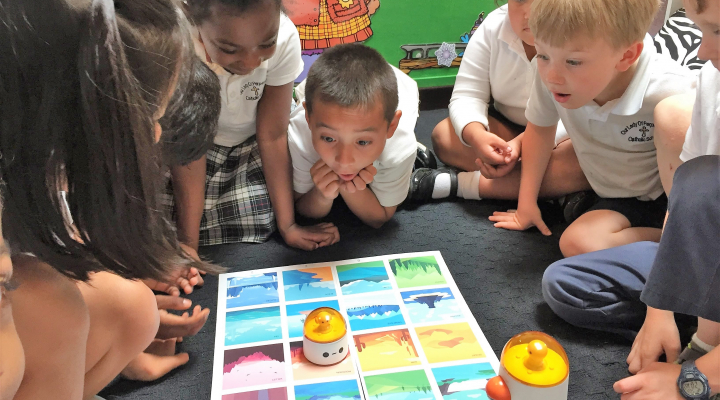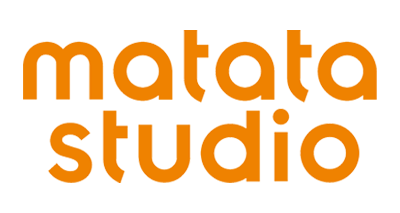
INTRODUCTION
This MatataStudio case study was conducted at two schools – at The International Preschool of Raleigh located in Raleigh, NC, and at The Duke School located in Durham, NC during February 2020 and March 2020. Students at both schools were introduced to and explored the Matatalab Coding, Music and Art sets.
The International Preschool of Raleigh (IPR) provides full and half-day preschool education for children ages two through five years old. This school has a strategic partnership with Mornwind Education which also operates an IPR location in Beijing, China. This global campus gives all IPR students an international learning experience as they learn collaborative liberal arts and STEM curriculum.
The Duke School educates children from pre-kindergarten through eighth grade, ages three to thirteen years old. The curriculum taught in this school emphasizes in-depth investigation of important topics that guides and encourages students to apply skills and strategies allowing them to solve real-world problems.
Both schools include a curriculum that highlights STEM skills and project-based learning. Both schools emphasize skills that enable their students to discover knowledge for themselves.
BACKGROUND
The MatataStudio Coding Set is a block-based, screenless and tangible programming tool that allows students to move a robot through a nature map by way of a Bluetooth-enabled command tower and board.
The Coding Set includes a Bluetooth-enabled command tower, control board, wheeled robot, and thirty-seven coding blocks in the form of enumerated tiles. The basic Matatalab set includes coding blocks, about the size of two Lego® bricks which allow students to place them in a coding configuration on the control board. The command tower takes a photo of the blocks’ configuration and at the touch of the large orange button, sends code via Bluetooth connectivity to move the robot on the map.
The Artist and The Musician Add-on Expansion Packs are Matatalab sets that supplement the Coding Set. The Artist Expansion Pack, with twenty angle blocks, allows students to use a marker placed in the robot’s center and configure coding blocks to have the robot create basic and involved shapes. The Musician Expansion Pack, with thirty-two music blocks and ten melody blocks, allows students to code a series of simple songs. Students can also code and compose music themselves.
CHARACTERISTICS OF STUDY
As a 2019 study from the US Department of Education states:
In an ever-changing, increasingly complex world, it’s more important than ever that our nation’s youth are prepared to bring knowledge and skills to solve problems, make sense of information, and know how to gather and evaluate evidence to make decisions. These are the kinds of skills that students develop in science, technology, engineering and math—disciplines collectively known as STEM. If we want a nation where our future leaders, neighbors, and workers have the ability to understand and solve some of the complex challenges of today and tomorrow, and to meet the demands of the dynamic and evolving workforce, building students’ skills, content knowledge, and fluency in STEM fields is essential.
The MatataStudio Coding Set is a block-based, screenless and tangible programming tool that allows students to move a robot through a nature map by way of a Bluetooth-enabled command tower and board.
Students and Teachers
Students and teachers at the International Preschool of Raleigh worked with Matatalab for a several hours in one day.
Students and teachers at the Duke School worked with Matatalab over a multi-day period during hourly after-school sessions.
Objectives
The case study’s objective was to observe students’ and teachers’ reactions to different aspects of the MatataStudio learning tools and to note how well these tools teach STEM and STEAM skills
Activities
In order to participate, students from each large group were separated into smaller groups of four. Each of these smaller groups were given twenty minutes to work with and experience each of the following Matatalab sets: Coding, Artist, and Musician.
After receiving basic instructions on the meaning of the symbols on the blocks and the contents of each of the expansion packs, students were able to collaboratively explore and play with each set.
At the end of the prescribed time students were very reluctant to stop playing.
During the musical coding, while the music was playing by the robot, students clapped along and sang the songs. During the art coding, students were very excited and yelled out ways that they could make things from each shape. Students were so excited that they clapped enthusiastically.
In each case students did not want to stop at the end of the sessions – they preferred to stay working with the projects. They asked if they could extend their time and when they would be able to work with the sets again.
Results
Regardless of age or location, students in both schools were highly engaged while working with Matatalab. Because each student could work at their own pace, they remained engrossed throughout the process. Working with Matatalab required little to no previous experience with coding or engineering. Because of this ease of use, students were not hesitant to try out and explore the kits.
Students learned advanced and refined coding skills. In particular they learned how to manipulate code to have the robot complete specific tasks. Students developed problem-solving skills by using trial and error to correct bugs in their codes.
Students also refined collaboration skills as they discussed and resolved challenges presented by their tasks.
STUDENT RESPONSE
All of the students were excited to play with and experience each of the sets. While the contents of each set did require some explanation, once done, students were able to grasp how to use the contents of each set. Students utilized the workbooks as they challenged themselves to learn more about each set.
Students expressed their desire to begin independently working with the contents as soon as they were able. Both groups proved to be very engaged during the entire period.
Students stated the following:
“I want a turn.”
“I know how now!”
“I want to work with it!”
“Can we please use Matata every day?!”
True elation and enjoyment were shown by the students with the art and musical sets. During the musical coding, while the music was playing by the robot, students clapped along and sang the songs.
During the art coding, students were very excited and yelled out lots of ways that they could make things from each shape. Students were so excited that they clapped with excitement.
One student announced, “I feel smarter when I’m coding the Matatabot.”
TEACHER RESPONSE
Teachers in both schools were very enthusiastic about Matatalab learning tools. They appreciated the tactileand visual aspects of the tool. Teachers were especially impressed seeing how this tool captivated and held the attention of their students. They stated they were eager to try Matatalab in their classrooms for upcoming math and literacy lessons. The following are some of their quotes that specifically reflect their responses:
General Ed teacher:
“Some of the kids totally understand it. They get it right away and love it. We’d like to have more units. We’d like to have enough so the kids who get it can go work in small groups of 2-3. Then I can work with a group of 4-5 who need more guidance and help.” “It’s really amazing to watch two of my students put their heads together with one of the Matatalab books. The blocks are pretty intuitive. The kids love it and you can truly see the learning in action.”
Math teacher:
“One of the best things is seeing my older students using the Artist pack to understand and identify angles. I give them a worksheet with the type of angle and a description. They use the robot to draw an example of that angle. Could we do it without the robot, of course, but the kids are a thousand times more engaged using Matatalab to do the work.”
Pre-Kindergarten Teacher:
“I love the durability of Matatalab. I keep all the coding blocks in a plastic tub so all the small parts stay together.”
Kindergarten Teacher:
“When they said my kids would learn to code with Matatalab I really didn’t believe. But really you should see them now, and listen to them. We use them to write letters and numbers and my 5- and 6-year-olds totally get it! If you listen, you’ll hear them talking about math, counting how many steps, talking about degrees of angles to make their letters. I especially love hearing them talk about the coding blocks and using words like … loop. Matatalab is my number one pick for hands-on learning.”
Third Grade Teacher:
“We’d like to have more units. We’d like to have enough so the kids who get it can go work in small groups of two to three when they’re doing their math problems. They love Matata so much, math is a lot more fun with a hands-on tool.”
ADMINISTRATOR RESPONSE
Administrators at both schools were equally interested in the Matatalab learning tools. The following quotes reflect their enthusiasm:
“My teachers love Matatalab and use it across content areas.”
“In Kindergarten our teachers use it in their centers. Now that kids know how to use it they are able to be independent with the robot and map. “
“Our music teacher loves to give her students turns composing music and also listening to notes to recognize patterns.”
“Literacy is another area teachers are using Matatalab. They’re able to have students write reports about all the places the robot visits. They’ve even made their own maps and worked together to build a brand-new journey for the robot. My teachers love seeing the kids so engaged in really creative work.”
CONCLUSION REFLECTION
The Matatalab Coding Set and Art and Music Add-on Expansion Packs proved to be extremely engaging for all students who participated in this case study. The ease with which even the very youngest students learned how to successfully use the sets is a testament to the powerful teaching potential this tool has when included as a part of any classroom’s STEM curriculum.
It was motivating to see the different ages of children able to use the Matatalab tools successfully and enthusiastically. Children as young as three and four were able to use directional code and work together to make shapes and play music. Older students, all the way up through primary grades, were extremely engaged with the Matatalab tools. They were especially enthusiastic using the Artist Expansion pack.
Teachers and administrators were also very excited about the potential for learning afforded by the Matatalab sets. They were impressed with the curriculum reach these tools afforded students. They found it easy to include Matatalab tools in their daily planning. As a whole teachers and school leaders only wanted more sets of Matatalab for their students.
REFERENCES
Science, Technology, Engineering, and Math, including Computer Science, U.S. Department of Education, 10/2019 https://www.ed.gov/stem
Hands-on Learning through Tangible Interaction, UMI-Sci-Ed (Exploiting Ubiquitous Computing, Mobile Computing and the Internet of Things to promote Science Education), 4/2017 http://umi-sci-ed.eu/hands-on-learning-through-tangible-interaction/
Connected Learning, American Library Association, September 2014 http://www.ala.org/tools/future/trends/connectedlearning
Connected Toys, American Library Association, May 2017
http://www.ala.org/tools/future/trends/connectedtoys
Tangible Programming in Early Childhood, Tufts University, May 2009
https://ase.tufts.edu/Devtech/publications/Bers-Horn_- May1809.pdf

 日本語
日本語

